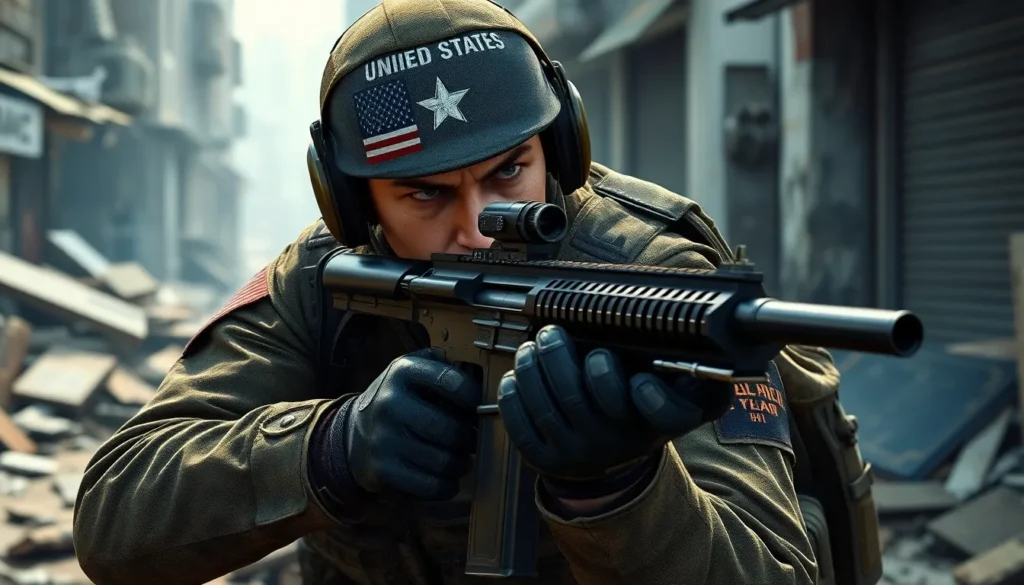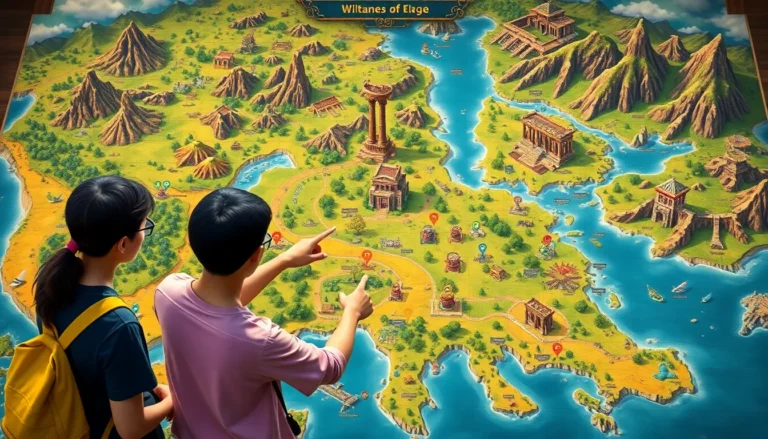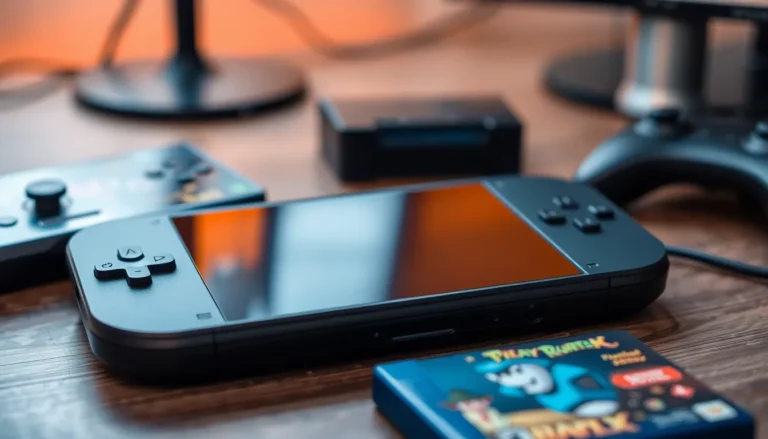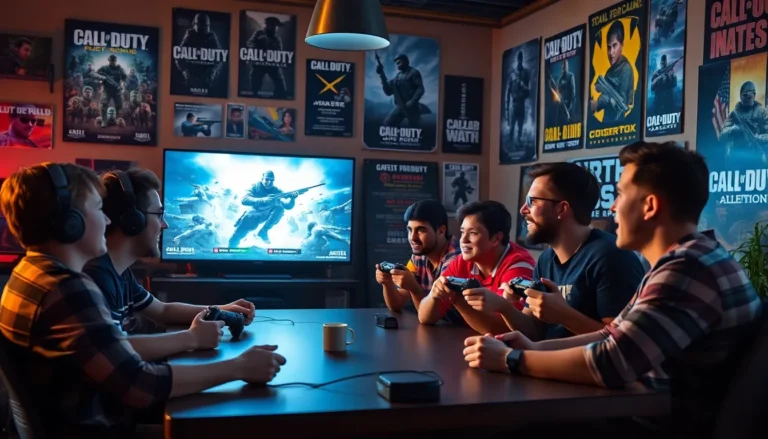Table of Contents
ToggleIn the fast-paced world of first-person shooters (FPS), animations play a crucial role in shaping the player’s experience. They bring weapons to life and create a sense of immersion that can make or break a game. From the fluidity of character movements to the intricate details of gun handling, well-crafted animations enhance gameplay and keep players engaged.
As technology advances, the expectations for FPS animations have skyrocketed. Gamers now seek realism and responsiveness that match their skills and strategies. This article delves into the art and science behind FPS animations, exploring techniques and trends that define the genre. Understanding these elements not only enriches the gaming experience but also highlights the creativity and innovation driving the industry forward.
Overview of FPS Animations
FPS animations serve as a critical component of first-person shooter games. They facilitate player immersion, creating a seamless connection between the player and the game world. These animations encompass various elements, including character movements, weapon handling, and environmental interactions.
Key Components of FPS Animations
- Character Animations: Character animations involve movements such as running, jumping, and crouching. These animations must be fluid to ensure realistic interactions within the game.
- Weapon Handling: Weapon handling animations depict actions like reloading, aiming, and shooting. Detailed animations in this area improve the user experience by reflecting the mechanics of real-world firearms.
- Environmental Interactions: Environmental animations illustrate how characters interact with their surroundings. This might include climbing obstacles, opening doors, or taking cover, enriching gameplay dynamics.
Trends in FPS Animation Techniques
- Motion Capture: Motion capture technology allows animators to record real human movements. This technique enhances realism by translating lifelike actions into animated characters.
- Procedural Animation: Procedural animation utilizes algorithms to create movements based on in-game physics. This approach generates dynamic animations that adapt to player actions and environmental factors.
- Blending Techniques: Blending techniques combine multiple animations seamlessly. For example, a character may transition from running to shooting without any visible breaks, maintaining immersion.
Impact on Gameplay
Effective FPS animations directly influence player engagement. Realistic movement and weapon handling contribute to gameplay balance and strategy. High-quality animations foster a sense of presence in the game world, enhancing overall enjoyment.
Future Directions
The future of FPS animations focuses on new technologies and improved techniques. Innovations such as AI-driven animations and enhanced physics engines may further elevate realism. As the gaming industry continues to evolve, higher expectations for animation quality will prevail among gamers.
Impact on Gaming Experience
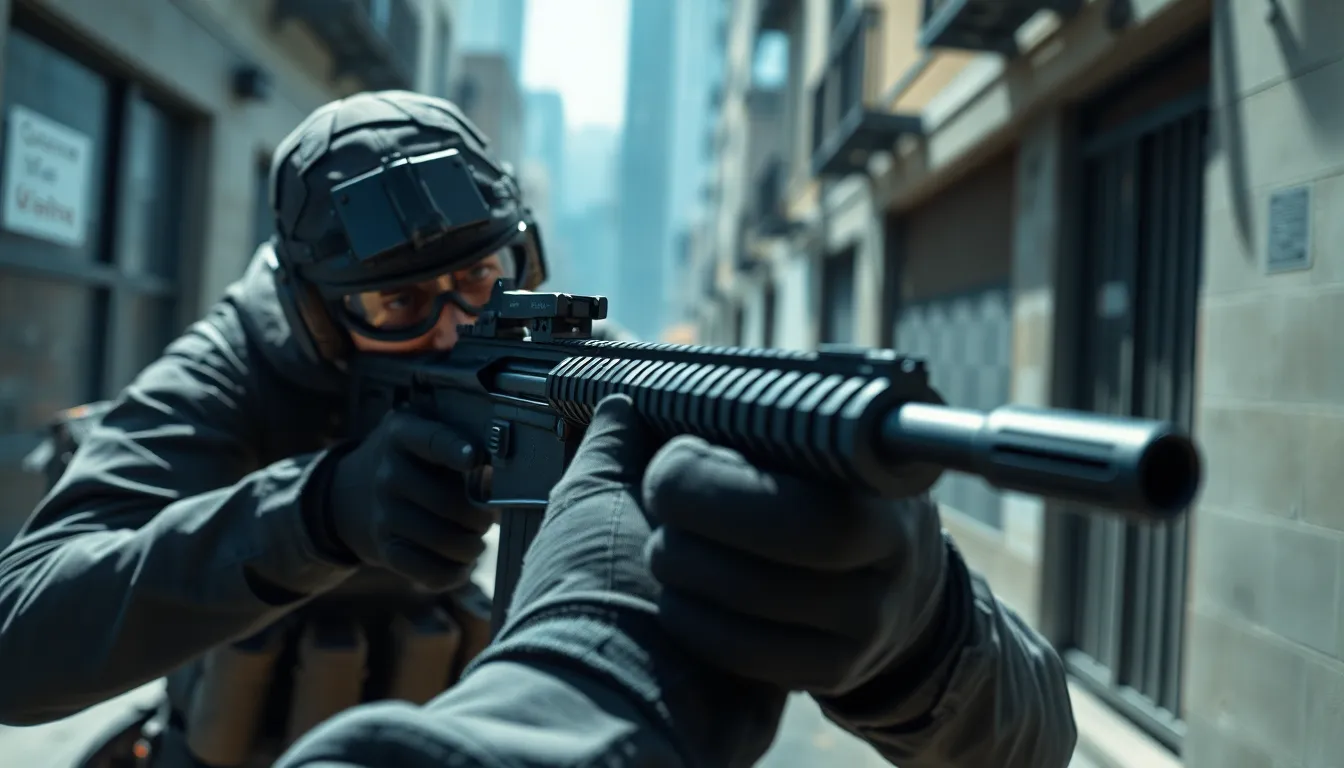
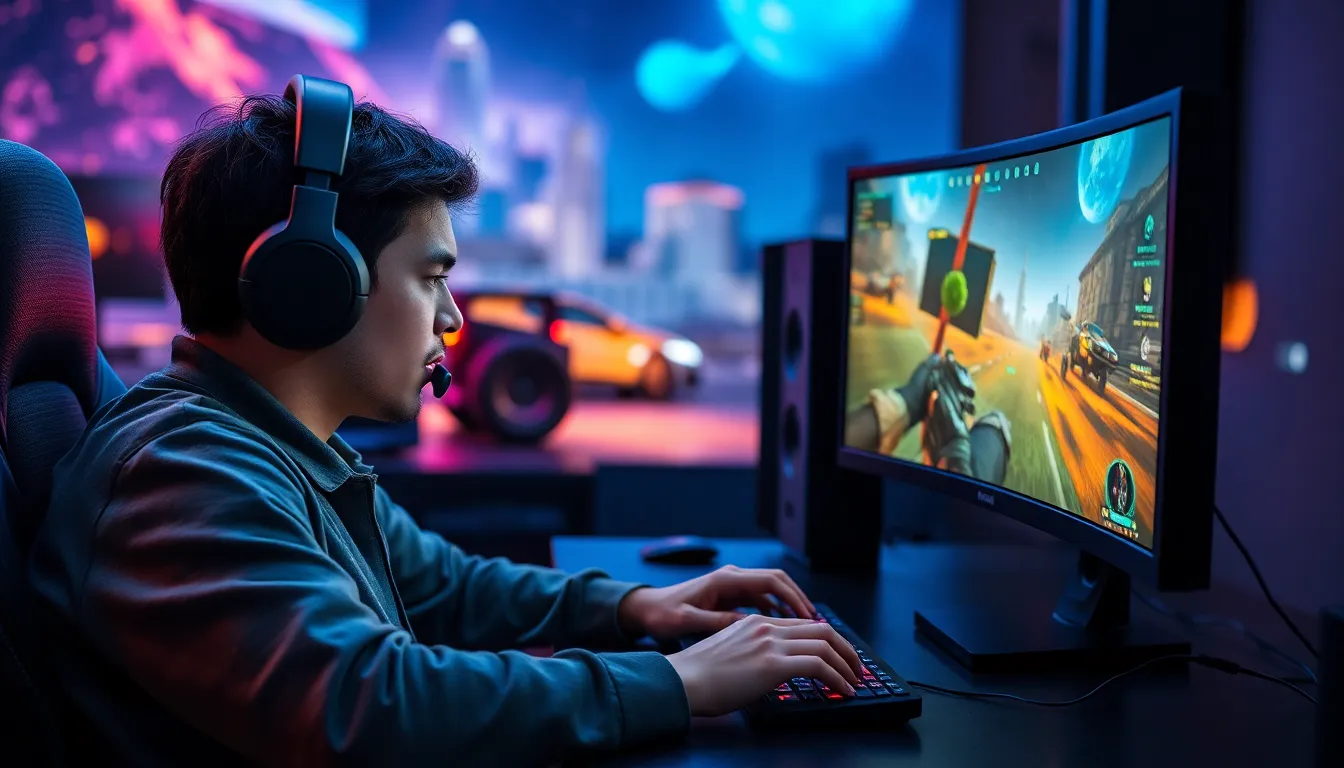
FPS animations significantly influence the overall gaming experience by enhancing immersion and player engagement. They create a more realistic and captivating environment that pulls players into the game world.
Immersion and Realism
FPS animations enhance immersion through high-quality, fluid character movements and realistic weapon handling. When players perceive lifelike actions, such as running or reloading, it deepens their connection to the game world. For instance, detailed animations of gun recoil and muzzle flash during shooting strengthen the illusion of reality. Additionally, environmental interactions, like climbing or taking cover, anchor players in the game’s setting. These intricate details contribute to a cohesive experience, making players feel as though they are part of the action, rather than mere spectators.
Player Engagement
FPS animations boost player engagement by adding layers of complexity to gameplay. Smooth and responsive animations allow players to execute strategies effectively, facilitating quicker reactions during critical moments. For example, well-timed melee attacks or precise reloading animations can turn the tide in fast-paced encounters. Furthermore, animations like weapon switching or character movements while aiming create a dynamic battlefield experience, encouraging players to experiment with different strategies. Engaged players often invest more time and effort, leading to enhanced enjoyment and replayability.
Techniques Used in FPS Animations
FPS animations employ various techniques to create realistic and immersive experiences. Two notable methods include motion capture technology and keyframe animation.
Motion Capture Technology
Motion capture technology accurately records human movements to create lifelike animations. It involves placing sensors on an actor’s body, capturing their actions and then translating these into digital models. This technique enhances realism in character animations, ensuring that running, jumping, and other movements reflect true biomechanics. Notably, games like “Call of Duty” and “Battlefield” utilize motion capture for authentic gun handling animations, such as reloading and aiming.
Keyframe Animation
Keyframe animation involves manually setting critical frames to establish motion paths and transitions. Animators create specific poses or frames, and interpolation fills in the gaps for smooth transitions. This method provides flexibility, allowing designers to emphasize critical actions, like shooting or sprinting. While it requires more time than motion capture, keyframe animation allows for stylization and unique artistic choices, making it ideal for projects where precise control over movements is necessary, such as in “Overwatch.”
Both techniques play crucial roles in enhancing gameplay by delivering fluid, engaging animations that keep players immersed in the experience.
Trends in FPS Animation
FPS animation continues to evolve, reflecting technological advancements and player expectations. Trends illustrate a shift toward more realistic and immersive experiences through innovative techniques.
Evolution Over the Years
FPS animations have transformed significantly since the genre’s inception. Early games used simplistic sprite animations and limited frame rates, which constrained the depiction of character movements. As technology advanced, developers embraced 3D modeling, providing more fluid animations. The introduction of motion capture in the early 2000s marked a pivotal shift, capturing authentic human movements for characters in titles like “Halo” and enhancing realism in interactions. Over the years, techniques like inverse kinematics and physics-based animations emerged, allowing more dynamic responses to player actions and environmental changes.
Current Innovations
Current innovations focus on enhancing realism and engagement in FPS animations. Motion capture technology now employs high-fidelity rigs to capture nuanced movements, resulting in smoother and more lifelike animations. Procedural animation techniques automatically adjust movements based on the character’s environment, promoting adaptability and realism. Blending techniques seamlessly transition between different states, such as running to jumping, contributing to a more immersive gameplay experience. Additionally, AI-driven systems offer personalized animations that adapt to player behavior, creating unique in-game experiences. Improved physics engines also enhance character interactions, making actions like climbing or vaulting more fluid and responsive to the game environment.
Challenges in Creating FPS Animations
Creating FPS animations involves overcoming various challenges that can impact both the quality and performance of the game. Technical limitations and the necessity to balance performance while maintaining high-quality animations are two significant hurdles developers face.
Technical Limitations
Technical limitations significantly affect the complexity and fidelity of FPS animations. Constraints include hardware capabilities, software tools, and the game engine’s performance. Developers often confront issues such as frame rate drops, which can arise when complex animations are loaded alongside high-quality graphics. Additionally, older systems or consoles might struggle with advanced animations, forcing developers to simplify models or reduce the animation quality to ensure smooth gameplay.
Limited memory resources also restrict the number of animations that can be loaded simultaneously. For example, a game may need to prioritize certain animations, leading to the exclusion of less critical ones, which may decrease the overall fluidity of character movements. Heavily detailed animations might require substantial pre-computation, adding another layer of complexity to the development process. These technical challenges necessitate innovative solutions that balance artistic vision with practical execution.
Balancing Performance and Quality
Balancing performance and quality remains crucial in FPS animation development. High-quality animations enhance player experience but can place additional strain on system resources. Developers must find the right equilibrium, ensuring that animations remain immersive without compromising the game’s performance.
Optimization techniques, such as level of detail (LOD) and culling, can help manage performance while maintaining animation quality. For instance, LOD enables simpler models and animations to load when characters are farther from the camera, conserving resources without sacrificing visual fidelity. Utilization of procedural animations can also contribute, allowing for alterations based on gameplay scenarios, thereby reducing the burden on pre-defined animations.
Regular testing and iteration mark necessary components of the development process. By monitoring performance metrics during these phases, developers pinpoint areas that may require adjustments, ensuring that players enjoy smooth and engaging experiences even under constraints.

